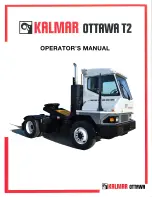
R
secure bulk material (e.g. sand or gravel) with
wall extenders or covers to prevent it slipping
R
secure add-on equipment and implements,
such as tipper bodies or loading cranes,
against inadvertent activation and movement.
Observe the operating instructions given by
the body and equipment manufacturer
R
close the side windows
R
vehicles with automated manual transmis‐
sion: select the
offroad shift program or acti‐
vate the manual drive program (
/
page 216).
R
deactivate Stability Control Assist
(
/
page 229).
R
deactivate ABS (
/
page 205).
R
engage the differential lock if the traction is
insufficient (
/
page 229).
R
vehicles with automated manual transmis‐
sion: activate the rocking-free function to
rock the vehicle free from a deep rut.
R
always keep the engine running and in gear
while driving
R
drive slowly and smoothly. It may often be
necessary to drive at walking pace
R
make sure that the wheels remain in contact
with the ground
R
drive with extreme care over unknown terrain
where you can only see for a short distance.
As a precaution, get out of the vehicle to take
a look at the route to be taken first
R
watch out for obstacles such as rocks, holes,
tree stumps and ruts
R
if possible, always drive over obstacles with
the wheels of one side of the vehicle. This
means damage to the vehicle is avoided
Driving on inclines
&
WARNING Risk of accident if you do not
keep to line of fall on inclines
If you drive at an angle or turn on an incline,
the vehicle could slip sideways, tip and roll‐
over.
#
Always drive on inclines in the line of fall
(straight up or down) and do not turn.
%
Do not shift the transmission into neutral on
downhill gradients.
#
If the vehicle is being driven up or down a
slope and it begins to tilt, steer the vehicle
into the line of the fall immediately. Only drive
over embankments and on slopes along the
line of fall.
#
Only brake once the vehicle is on the line of
fall.
#
Slowly depress the brake pedal if the engine's
braking effect is insufficient when driving
downhill.
Preparing for fording
A vehicle's fording capability depends on, among
others, the following factors:
R
the type of vehicle
R
the frame height of the chassis
R
the tyres
The fording depths listed below are only exam‐
ples and are meant to give an overview. They
apply to slow fording at a constant speed
between 5 and max. 10 km/h.
If in doubt, or in the case of special-purpose vehi‐
cles, consult a Mercedes-Benz Service Centre
before a possible fording.
Permissible fording depths for vehicles in road
use without all-wheel drive:
R
street vehicles with a low vehicle frame and
315/60 R 22.5 tyres, up to max. 200 mm
R
construction vehicles with 315/80 R 22.5
tyres from 300 mm up to max. 500 mm
R
other street vehicles with 315/80 R 22.5
tyres, up to max. 300 mm
R
other street vehicles with oversize tyres, e.g.
12 R 24 or 14 R 20, up to max. 600 mm
Permissible fording depths for fording with all-
wheel drive vehicles:
R
without fording equipment, with 13 R 22.5
tyres, up to max. 700 mm
R
with fording equipment, up to max. 1,200 mm
On vehicles with fording equipment, a plate with
the details of the vehicle-specific permissible
fording depth can be found on the driver's door
or on the cockpit.
%
Fording as described here applies exclusively
to off-road and all-wheel-drive vehicles.
Observe the following points while preparing:
R
determine and observe the maximum permis‐
sible fording depth of the vehicle
R
determine the water depth and the character‐
istics of the surface condition under the
272 Driving mode
Содержание Actros
Страница 21: ......














































